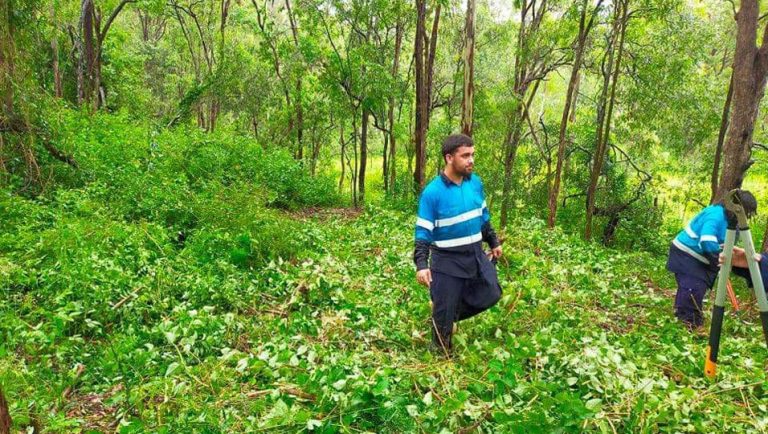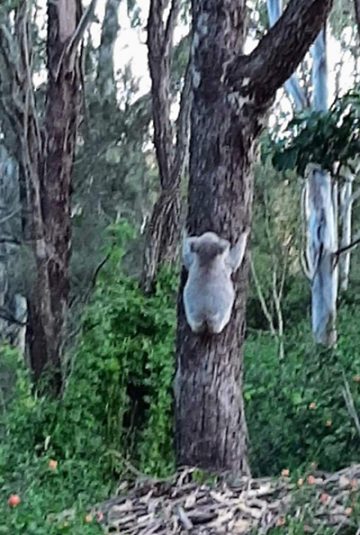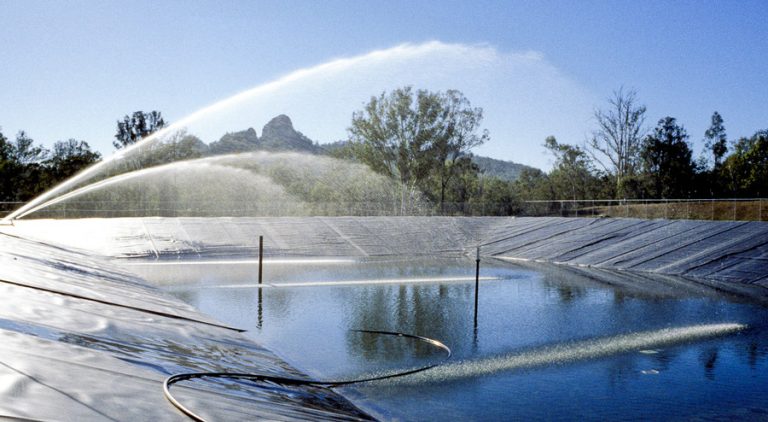To protect and preserve koala habitat this year Ivorys Rock worked with Healthy Land and Water Queensland and Wirrinyah, a local First Nation's Conservation Service. In Yugera language Wirrinyah means “coming back” which refers to the former state of the land and traditional ways of caring for country, so it repairs and regenerates.
Ivorys Rock is part of the broader koala restoration project which includes work at the Queensland Trust for Nature (QTFN) conservation property nearby called
Koala Crossing. The Wirrinyah team cleared the lantana from the bases of the gum trees at Ivorys Rock so the koala can climb them.
Wirrinyah has also cleared weeds from sections of the Riparian Corridor. There's more work to be done. The team like coming to Ivorys Rock, which is near their home.
The number of species calling Ivorys Rock home is increasing as urban development displaces wildlife. The Eastern Grey kangaroos arrived in 2013 in search of greener pastures. They seem to have settled in well alongside the many wallabies who were already here.
There are over 160 species of wildlife recorded at Ivorys Rock. An echidna was seen one evening in September, and also a pair of wedge-tailed eagles, busy devouring their prey, in this case a possum. A koala was also photographed as it scampered across the ground to climb its tree.
So the 1,500 acres (620 hectares) of Ivorys Rock provides sustenance a-plenty for the many creatures, bird life, marsupials and amphibians, and is a haven for abundant flora and fauna.
* A Riparian Corridor is a unique plant community consisting of the vegetation growing near a river, stream, lake, or other natural body of water.
The sewage treatment plant (STP) is a key factor in environment sustainability at Ivorys Rock, and plays an important part in supporting the natural ecology. This is especially so during extreme heat events and times of drought. The treated waste water irrigates the environment, sustaining all the animals, amphibians and birds who call Ivorys Rock home.
The STP is operated by Michael Dobell-Brown assisted by volunteers & contractors. The amount of wastewater treated at the facility fluctuates according to the number of people on site, sometimes swelling to the size of a small town though usually treating a fraction of that number.
Wastewater is treated in a series of 24 tanks using Biological Nutrient Removal. In the first series of Primary Tanks the water is treated using buoyancy and gravity. In the second series of Tanks, oxygen is added to the waste stream and treated using a vast number of bacteria. Finally, the waste stream is disinfected & goes to a large wet weather storage dam from where it is sent to on-site irrigation
The system includes 36 medium to large electric pumps which are managed by the team, doing as much as possible to minimise their running costs. All water is managed and stays on site, including the sludges and nutrients generated by event activities. Any final toxic material is removed from the property for treatment by local government.
The Sewerage Systems carbon footprint is minimised by constant operation & monitoring. The legally required plant flows & final effluent quality data is collected and reported to the Facilities Manager on a weekly basis. Ideally not a drop is wasted!


